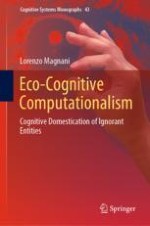2022 | OriginalPaper | Chapter
3. AlphaGo, Locked Strategies, and Eco-cognitive Openness
Author : Lorenzo Magnani
Published in: Eco-Cognitive Computationalism
Publisher: Springer International Publishing
Activate our intelligent search to find suitable subject content or patents.
Select sections of text to find matching patents with Artificial Intelligence. powered by
Select sections of text to find additional relevant content using AI-assisted search. powered by

 Naturalizing the logic of abduction. J. Appl. Logic
Naturalizing the logic of abduction. J. Appl. Logic